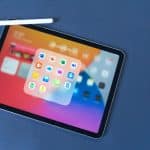 SAN FRANCISCO–Apple’s stock slipped below $500 for the first time in 11 months on Monday as investors reacted to reports signaling the company’s latest iPhone is falling further behind a slew of sleek alternatives running Google’s Android software.
SAN FRANCISCO–Apple’s stock slipped below $500 for the first time in 11 months on Monday as investors reacted to reports signaling the company’s latest iPhone is falling further behind a slew of sleek alternatives running Google’s Android software.
The latest indication that Apple, the world’s most valuable company, is seeing sluggish demand for its iPhone 5 emerged in separate stories published Monday in the Japanese newspaper Nikkei and The Wall Street Journal. Both publications cited unnamed people familiar with the situation saying Apple has dramatically reduced its orders for the parts needed to build the newest iPhone because the device isn’t selling as well as the company hoped.
The adjustment means Apple will buy about half as many display screens for the iPhone as management originally planned for the opening three months of the year, according to the newspapers.
Apple Inc., which is based in Cupertino, California, declined to comment Monday. Spokeswoman Natalie Kerris said Apple executives would share their views on market conditions Jan. 23 when the company is scheduled to release its financial results for the final three months of 2011. The period covers the first full quarter that the iPhone 5 was on sale.
Although Apple hailed the iPhone 5 as the best version yet of a product that has revolutionized the telecommunications and computing industry, the company’s stock has wilted since the device hit the market.
After peaking at $705.07 on the day of the iPhone 5’s Sept. 21 release, Apple’s stock has plunged nearly 30 percent. The shares fell $18.55, or 3.6 percent, to close Monday’s regular trading at $501.75, dragging the company’s market value nearly $190 billion below where it stood in late September. The stock traded at $498.51 earlier in the day, its lowest price since February.
The stock’s decline hasn’t been entirely caused by concerns about the iPhone 5’s sales performance. Industry analysts are also worried about the recent introduction of a smaller, less expensive iPad cutting into the company’s profits.
But the biggest fears hover around the iPhone because it has become Apple’s most valuable product since the company’s late CEO, Steve Jobs, unveiled the first model in 2007. Apple has sold more than 271 million of the devices since then, and in the company’s last fiscal year ending in September, the iPhone generated $80 billion in sales to account for more than half of the company’s total revenue.
But Apple’s upgrades of the iPhone in the past two years have disappointed gadget lovers who have been clamoring for Apple to do more to stay in front of device makers relying on the free Android software made by Google Inc. For instance, there were high hopes for a larger iPhone screen with the release of the 2011 model, but Apple waited until last September to take that leap. And when Apple moved to a larger display screen with the iPhone 5, it didn’t include a special chip to enable users to make mobile payments by tapping the handset on another device at the checkout stand. Such a mobile payment feature is available on some Android phones.
Finally, Apple has insisted that wireless carriers subsidize so much of the iPhone’s cost in exchange for customers’ two-year commitments on data plans that the carriers make little or no money by selling the devices. That has prompted more wireless carriers to tout less expensive Android phones in their stores, undercutting the demand for iPhones, said Darren Hayes, who has been studying the shifting market conditions as chairman of the computing systems program at Pace University in New York.
Through the third quarter of last year, Android devices represented 75 percent of smartphone shipments worldwide according to the research firm International Data Corp. That was up from 58 percent at the same point 2011. Meanwhile, Apple’s share of worldwide smartphone shipments has fallen from a peak of 23 percent in the fourth quarter of 2011 to 15 percent in the third quarter of last year.
Samsung Electronics, in particular, has been benefiting from the growing popularity of its Android-powered phones, led by its Galaxy S line. The company said Monday that it sold more than 100 million Galaxy S phones in less than three years. It took the iPhone nearly four years to reach that milestone.
“This is a real wake-up call for Apple,” Hayes said. “They need to be more flexible in how they do things.” Among other things, Hayes thinks Apple may have to reduce the financial burden on wireless carriers selling the iPhone and spend more money advertising the devices, especially with the recent wave of phones running on Microsoft Corp.’s Windows software. Apple’s efforts to sell more iPhones to companies also could be short-circuited if Research in Motion Ltd.’s upcoming release of a revamped BlackBerry proves to be a hit. The BlackBerry is due out Jan. 30.
In an attempt to regain its competitive edge, Apple already is considering the release of a less expensive version of the iPhone made of cheaper parts to boost sales in less affluent countries, according to a report last week in The Wall Street Journal. The company so far hasn’t commented on that speculation, either. The least expensive iPhone 5 without a wireless contract sells for $649. With the subsidy included with a two-year wireless service contract, the iPhone 5 sells for as little as $199.
Even as it loses ground to Android products, the iPhone remains a solid seller. Some analysts believe Apple sold more than 50 million iPhones in its last quarter ending in December, which would be far the most units that the company has ever shipped during any previous three-month period.
What’s more, the iPhone 5 got off to a torrid start in China, where Apple expects to eventually sell more devices than it does in the U.S. Apple said it sold more than two million iPhone 5s in the three days after its debut in China last month.
Associated Press












